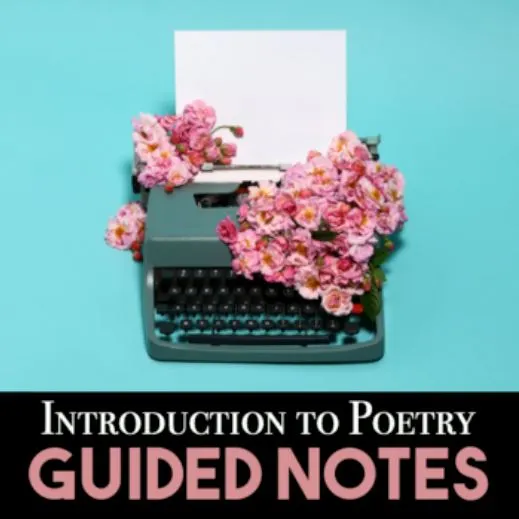Description
Teach your students what a poem is as well as all the important information necessary while teaching poetry, like: vocabulary, sound devices, types of poetry, figurative language, how to analyze a poem, and how to find rhyme scheme.
In this resource, you will receive a packet of graphic organizers/guided notes along with a Powerpoint lesson that teaches the following terminology:
VOCABULARY
poem, speaker, line, stanza, quatrain, couplet, cinquain, tercet, refrain, symbol, theme, mood
tone, imagery, juxtaposition, oxymoron, pun, paradox, allusion, proverb, foot, iamb, iambic pentameter, enjambment, anaphora, metonymy
FIGURATIVE LANGUAGE
simile, metaphor, personification, idiom, hyperbole, irony
SOUND DEVICES
rhyme, rhyme scheme, slant rhyme, rhythm, meter, alliteration, consonance, assonance, onomatopoeia, repetition
TYPES OF POETRY
narrative, lyrical, haiku, ballad, sonnet, limerick, free verse, acrostic, concrete, blank verse, blues poem, elegy, ode, prose, villanelle
HOW TO ANALYZE A POEM
HOW TO DETERMINE RHYME SCHEME
